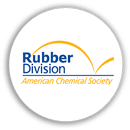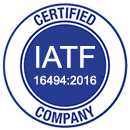ASTM D8059: Standard Test Method for Measuring Unvulcanized Dynamic Strain Softening (Payne Effect) in Rubber Compounds
ASTM D8059 is a standardized test method developed by ASTM International for measuring the unvulcanized dynamic strain softening of rubber, commonly known as the Payne Effect. The test helps assess filler dispersion, viscoelastic behavior, and processing characteristics of rubber compounds containing reinforcing fillers like carbon black and silica.
The Payne Effect is a crucial property that influences the mechanical performance, durability, and manufacturing efficiency of rubber products. By using a sealed cavity rotorless shear rheometer, ASTM D8059 provides quantifiable data on how rubber compounds behave under varying strain conditions before vulcanization.
Purpose and Importance of ASTM D8059
The ASTM D8059 test method serves several key functions:
- Filler Dispersion Evaluation – Measures the level of filler-rubber interaction, crucial for tire compounds, industrial seals, and elastomers.
- Quality Control – Ensures that rubber materials meet performance specifications before processing and vulcanization.
- Process Optimization – Helps manufacturers fine-tune mixing parameters and filler content to enhance performance.
- Research & Development – Supports the development of advanced rubber formulations with improved durability and elasticity.
- Regulatory Compliance – Many industries require compliance with ASTM D8059 for material certification and performance validation.
Key Test Procedures in ASTM D8059
The ASTM D8059 standard provides detailed procedures for evaluating the Payne Effect in rubber compounds. Below are the major test components:
1. Sample Preparation
- A rubber compound sample is prepared according to ASTM specifications.
- The sample should be uniform and free of defects to ensure accurate results.
2. Strain Amplitude Sweep Test
- The test is conducted using a sealed cavity rotorless oscillating shear rheometer.
- A sinusoidal strain is applied, starting from a low-strain amplitude to a high-strain amplitude.
- The reduction in storage modulus (G’) is recorded as strain increases.
3. Data Collection & Analysis
- The Payne Effect magnitude is calculated by determining the difference in storage modulus (G’) between low and high strain.
- A high Payne Effect indicates strong filler-filler interactions, whereas a low Payne Effect suggests better dispersion and filler-rubber bonding.
4. Interpretation of Results
- Higher Payne Effect Values indicate poor filler dispersion, leading to weaker mechanical properties and reduced durability.
- Lower Payne Effect Values suggest well-dispersed fillers, resulting in enhanced elasticity, durability, and processability.
Applications of ASTM D8059
Automotive Industry
- Tire Manufacturing – Ensures optimal filler dispersion, improving tread wear resistance and fuel efficiency.
- Seals and Gaskets – Enhances durability and elasticity for engine and transmission components.
- Vibration Dampeners – Ensures high-performance damping in automotive suspension systems.
Industrial Rubber Manufacturing
- Conveyor Belts and Hoses – Ensures rubber reinforcement for longevity in harsh environments.
- Anti-Vibration Pads – Improves mechanical resilience for industrial equipment.
- Weather Seals and Insulation – Enhances thermal stability and weather resistance.
Consumer Products and Footwear
- Sports Equipment – Ensures elasticity and durability in rubber-based sporting goods.
- Footwear Soles – Improves shock absorption and traction in rubber shoe soles.
Medical and Healthcare
- Rubber Tubing and Catheters – Enhances flexibility and biocompatibility in medical rubber applications.
- Surgical Gloves and Seals – Ensures high-performance elastomers for medical-grade rubber products.
Industries Benefiting from ASTM D8059
- Tire and Rubber Manufacturers – Ensures consistent filler dispersion and product performance.
- Automotive Component Suppliers – Optimizes seals, gaskets, and dampeners for enhanced durability.
- Industrial Equipment Manufacturers – Guarantees long-lasting rubber parts for harsh environments.
- Footwear and Consumer Goods Producers – Improves comfort and durability of rubber-based products.
- Research Laboratories – Supports new material development and innovation in elastomers and polymers.
Advantages of Implementing ASTM D8059
- Improves Material Consistency – Helps maintain uniformity in filler dispersion and mechanical properties.
- Enhances Product Performance – Reduces rubber fatigue, improves elasticity, and extends service life.
- Supports Manufacturing Efficiency – Optimizes mixing, processing, and extrusion parameters.
- Reduces Production Costs – Prevents material defects, minimizing waste and rework.
- Ensures Regulatory Compliance – Meets quality standards for automotive, industrial, and consumer applications.
Challenges in ASTM D8059 Implementation
- Specialized Equipment Required – Rotorless shear rheometers must be properly calibrated and maintained.
- Technical Expertise Needed – Requires skilled personnel to interpret complex rheological data.
- Environmental Sensitivity – Temperature and humidity must be carefully controlled to ensure test accuracy.
Despite these challenges, ASTM D8059 compliance provides manufacturers with reliable quality assurance and product optimization benefit








